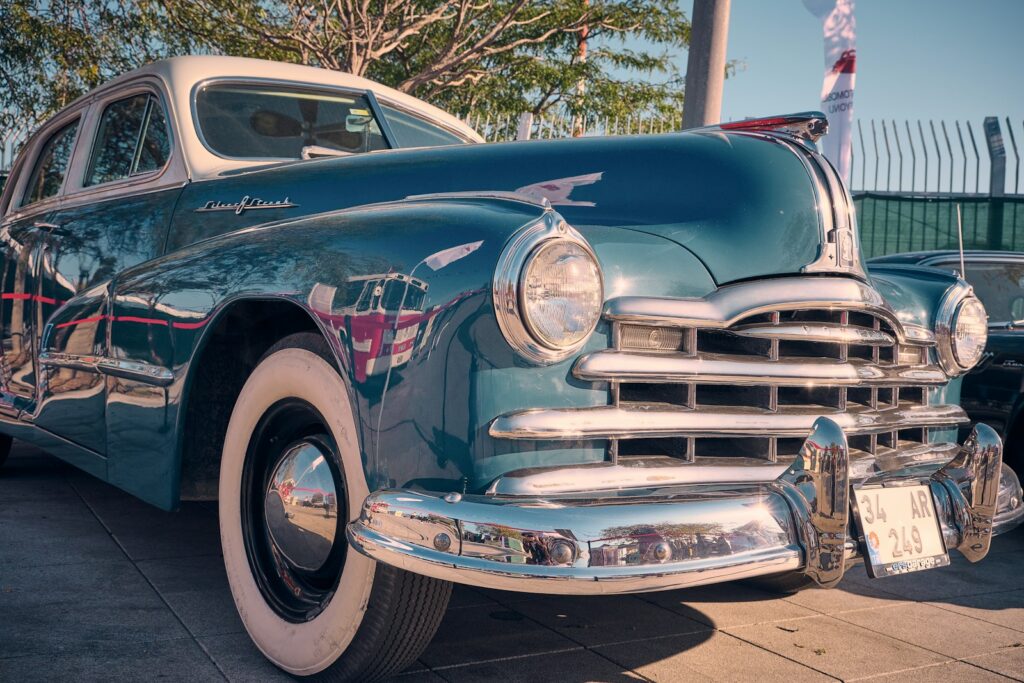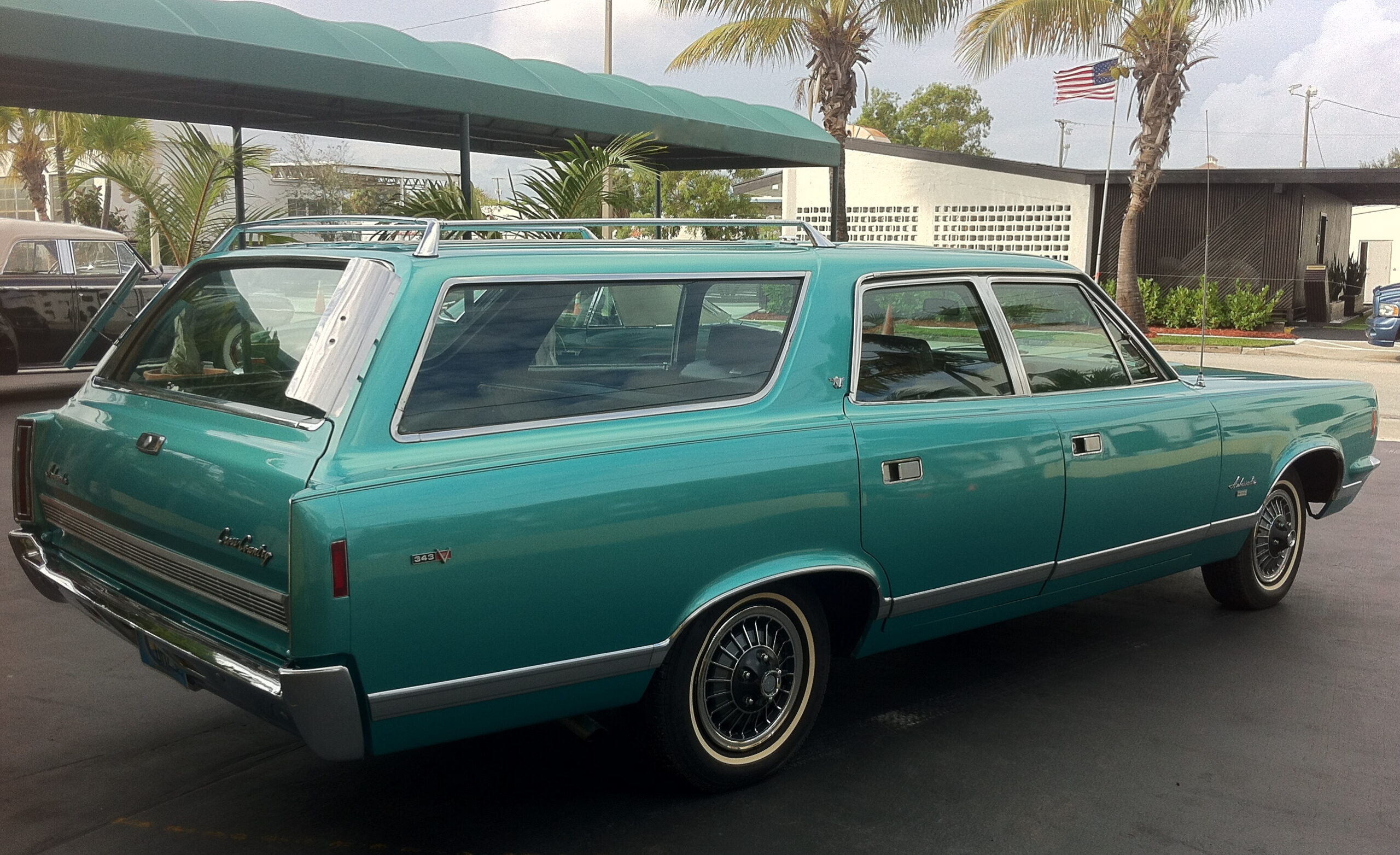
In the vast automotive landscape, where sleek sports cars and imposing SUVs often steal the spotlight, there exists a class of vehicles that whispers tales of practicality, adventure, and a bygone era: the station wagon. These workhorses, once ubiquitous on suburban streets, have largely faded from mainstream consciousness, overshadowed by their trendier counterparts. Yet, within their spacious interiors and unassuming designs lie stories of family road trips, weekend projects, and a uniquely American spirit of exploration, embodying a commitment to versatility that remains compelling today.
Station wagons, for many, evoke a sense of nostalgia. They represent a time when cars were less about status and more about utility, built to haul families, groceries, camping gear, and everything in between. Their long roofs and ample cargo space made them ideal for tackling any task, from hauling lumber to transporting Little League equipment. The allure of the wagon lies in its versatility, its understated elegance, and its inherent connection to a simpler, more practical way of life that continues to resonate with enthusiasts.
While some iconic wagons are well-documented, many equally deserving models have slipped through the cracks of popular memory, their innovations and charms often overlooked. This article seeks to unearth some of the most compelling wagons that time seems to have forgotten, celebrating their enduring appeal and reminding us of the simple joys and sophisticated engineering they represent. For those who appreciate automotive history and distinctiveness, these wagons present an alluring alternative, carrying stories, embodying engineering marvels, and showcasing timeless design.
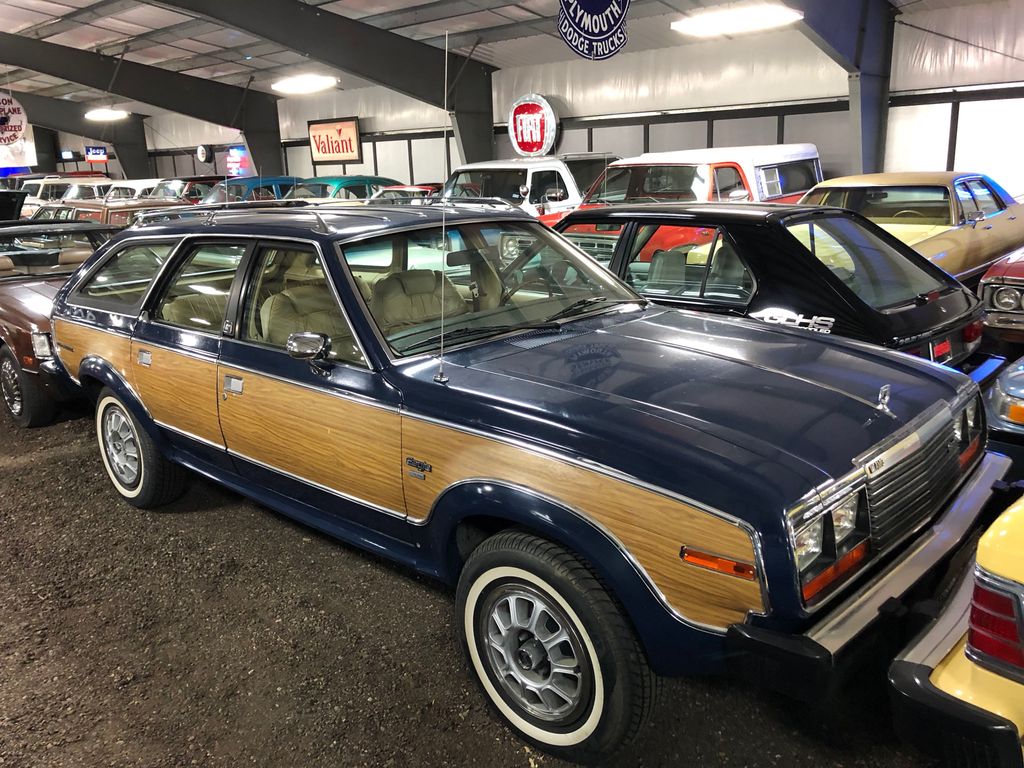
1. **AMC Eagle Wagon**
The AMC Eagle Wagon stands as a true pioneer in automotive history, offering all-wheel drive capability in a family-friendly package that was revolutionary for its time. Introduced in the early 1980s, this innovative vehicle was remarkably ahead of its era, anticipating the growing demand for SUVs and crossovers long before they became commonplace. Its rugged design and impressive off-road prowess made it an immensely popular choice for those who lived in rural areas or frequently enjoyed outdoor adventures, demonstrating a blend of utility and capability rarely seen in a wagon.
What truly set the Eagle Wagon apart was its groundbreaking design and its sophisticated all-wheel drive system, which provided enhanced traction and control in diverse driving conditions. This technological foresight allowed it to navigate challenging terrains with confidence, extending its practicality far beyond the paved suburban streets. It wasn’t just a car; it was a statement of adventure and adaptability, designed for those who needed a vehicle as versatile as their lifestyle.
The AMC Eagle Wagon’s innovative approach undeniably paved the way for the modern crossover segment, proving that a family vehicle could offer both spaciousness and genuine all-weather, all-terrain capability. Its legacy is one of forward-thinking engineering and a unique blend of ruggedness with everyday usability. This makes it a truly unique and memorable vehicle that, despite its historical significance, is often underappreciated in discussions of automotive evolution.
Read more about: Buckle Up! 15 Iconic Celebrity Car Collections That Are Pure American Cool
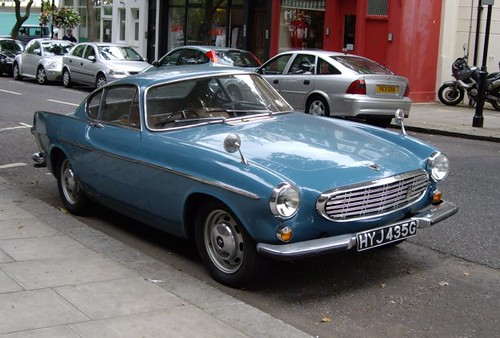
2. **Volvo P1800 ES**
The Volvo P1800 ES, produced in the early 1970s, is widely recognized as a true icon of automotive design, particularly for its distinctive rear end. Often referred to as a “shooting brake,” this elegant wagon seamlessly combines sporty elegance with remarkable practicality, a design philosophy that remains highly coveted by collectors and enthusiasts today. Its elongated body and carefully placed chrome accents contribute to a visually stunning presence, making it a head-turner even decades after its initial release.
Beyond its captivating exterior, the P1800 ES offers a surprising amount of interior space, a testament to thoughtful Scandinavian design. This generous roominess makes it an ideal companion for weekend getaways, comfortably accommodating both passengers and luggage. The vehicle’s panoramic rear window not only enhances visibility for the driver but also adds significantly to its unique charm, creating an airy and engaging cabin environment for all occupants.
This Volvo’s exceptional blend of style and functionality continues to captivate car enthusiasts globally, solidifying its place as a cherished classic. Its distinctive profile and underlying engineering integrity represent a high point in Volvo’s design history, showcasing a commitment to both aesthetics and utility. The P1800 ES remains a testament to the fact that a practical vehicle can also be an object of profound beauty and enduring desirability, making it a celebrated yet perhaps still underappreciated gem.
Car Model Information: 2025 Hyundai PALISADE XRT
Name: Volvo P1800
Caption: 1965 Volvo 1800S
Designer: Pelle Petterson
Manufacturer: Volvo Cars
Assembly: West Bromwich,Torslanda,Gothenburg,Arica
Production: 1961–1973,coupé: 39,407,sports estate: 8,077
Layout: Front-engine, rear-wheel-drive layout
Transmission: Volvo M40 transmission,Overdrive_(mechanics)#In_Europe,Borg-Warner 35 transmission
Length: convert
Width: 1700 mm
Abbr: on
Height: convert
Weight: convert
Wheelbase: 2450 mm
Related: Volvo Amazon
Engine: Volvo B18 engine#B18,Volvo B18 engine#B20
Class: Sports car
BodyStyle: coupe,shooting brake
Predecessor: Volvo P1900
Categories: 1970s cars, All articles needing additional references, All articles with dead external links, All articles with unsourced statements, Articles needing additional references from March 2018
Summary: The Volvo P1800 (pronounced eighteen-hundred) is a 2+2, front-engine, rear-drive sports car manufactured and marketed by Volvo Cars between 1961 and 1973. Originally a coupé (1961–1972), it was also offered in a shooting brake configuration toward the end of its production (1972–1973). Styling was by Pelle Petterson under the tutelage of Pietro Frua when Frua’s studio was a subsidiary of the Italian Carrozzeria Ghia, and the mechanicals were derived from Volvo’s Amazon/122 series.
Marketed as a touring car rather than a sports car, the P1800 became widely known when driven by British actor Roger Moore in the television series The Saint, which aired from 1962 to 1969. In 1998, an 1800S owned by Irv Gordon (1940–2018) was certified as the highest mileage private vehicle driven by the original owner in non-commercial service—having exceeded 3.25 million miles (over 5.23 million km) as of his death in 2018.
Get more information about: Volvo P1800
Buying a high-performing used car >>>
Brand: Volvo Model: P1800 ES
Price: $40,788 Mileage: 5,081 mi.
Read more about: Old But Gold: 14 Classic Cars That Are Practically Unbreakable – True Legends of Durability
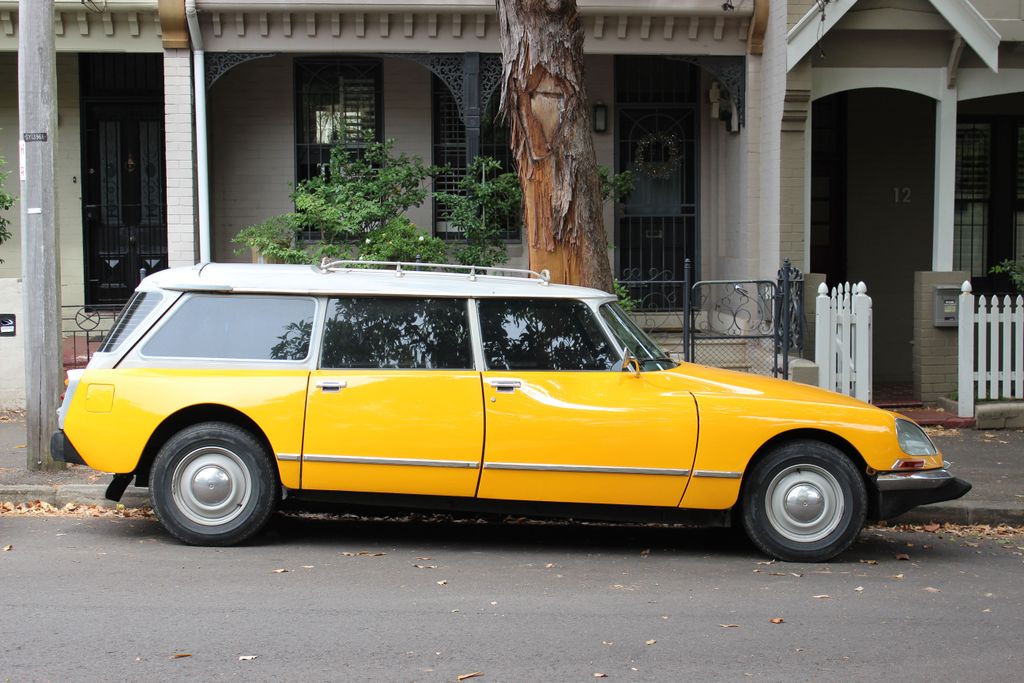
3. **Citroën DS Safari**
The Citroën DS Safari stands out with its truly futuristic design and innovative technology, cementing its place as a visionary vehicle when it launched in the mid-1960s. Its most iconic feature, the hydropneumatic suspension, delivered an unmatched smooth ride that absorbed road imperfections with an almost ethereal grace, setting new standards for comfort. The sleek lines and aerodynamic curves of the DS Safari captured the imagination of car lovers worldwide, proving that automotive design could be both functional and profoundly artistic.
Beyond its striking aesthetics and unparalleled ride quality, the DS Safari was also a pioneer in vehicular safety. It notably offered front disc brakes, an advanced feature for its era, and boasted sophisticated aerodynamics that contributed to stable handling and fuel efficiency. This dual focus on comfort and safety, combined with its distinctive exterior, made it a favorite for families and adventurers alike, showcasing Citroën’s commitment to pushing automotive boundaries.
The spacious interior of the DS Safari, paired with its groundbreaking engineering and unique exterior, solidifies its status as a symbol of French automotive brilliance and innovation. Today, it is celebrated not just as a classic, but as a vehicle that genuinely broke the mold, offering a driving experience unlike anything else on the road. The DS Safari truly embodies the spirit of a hidden gem, where form and function converged in an extraordinary package that continues to fascinate and inspire.
Car Model Information: 2025 Hyundai PALISADE XRT
Name: Citroën DS
Aka: Citroën DS 19 / DS 21 / DS 23,Citroën D Special,Citroën D Super,Citroën ID 19 / ID 21,Citroën DW (UK, 1962–1965)
Manufacturer: Citroën
Production: 1955–1975,1,455,746 produced
Assembly: 15th arrondissement of Paris,Heidelberg, Victoria,Mangualde,Slough, England,Johannesburg,Koper, Slovenia
Class: Executive car
BodyStyle: Sedan (automobile),Station wagon,convertible
Designer: Flaminio Bertoni
Engine: unbulleted list
Transmission: Automatic transmission
Layout: Front mid-engine, front-wheel-drive layout
Related: Citroën SM
Length: 4826 mm
Abbr: on
Width: 1791 mm
Height: 1464 mm
Weight: 1270 kg
Wheelbase: 3124 mm
Predecessor: Citroën Traction Avant
Successor: Citroën CX
Categories: 1960s cars, 1970s cars, All articles with unsourced statements, Articles containing French-language text, Articles with short description
Summary: The Citroën DS (French pronunciation: [si.tʁɔ.ɛn de.ɛs]) is a front mid-engined, front-wheel drive executive car manufactured and marketed by Citroën from 1955 to 1975, in fastback/sedan, wagon/estate, and convertible body configurations, across three series of one generation.
Marketed with a less expensive variant, the Citroën ID, the DS was known for its aerodynamic, futuristic body design; unorthodox, quirky, and innovative technology, and set new standards in ride quality, handling, and braking, thanks to both being the first mass production car equipped with hydropneumatic suspension, as well as disc brakes. The 1967 series 3 also introduced directional headlights to a mass-produced car.
Italian sculptor and industrial designer Flaminio Bertoni and the French aeronautical engineer André Lefèbvre styled and engineered the car, and Paul Magès developed the hydropneumatic self-levelling suspension. Robert Opron designed the 1967 Series 3 facelift. Citroën built 1,455,746 examples in six countries, of which 1,330,755 were manufactured at Citroën’s main Paris Quai de Javel (now Quai André-Citroën) production plant.
In combination with Citroën’s proven front-wheel drive, the DS was used competitively in rally racing during almost its entire 20‑year production run, and achieved multiple major victories, as early as 1959, and as late as 1974. It placed third in the 1999 Car of the Century poll recognizing the world’s most influential auto designs and was named the most beautiful car of all time by Classic & Sports Car magazine.
The name DS and ID are puns in the French language. “DS” is pronounced exactly like déesse, lit. ’goddess’, whereas “ID” is pronounced as idée (‘idea’).
Get more information about: Citroën DS
Buying a high-performing used car >>>
Brand: Citroën Model: DS Safari
Price: $40,788 Mileage: 5,081 mi.
Read more about: From Concept Car Catastrophe to Production Car Panic: 14 Vehicles That Redefined ‘Awful’ on the Asphalt
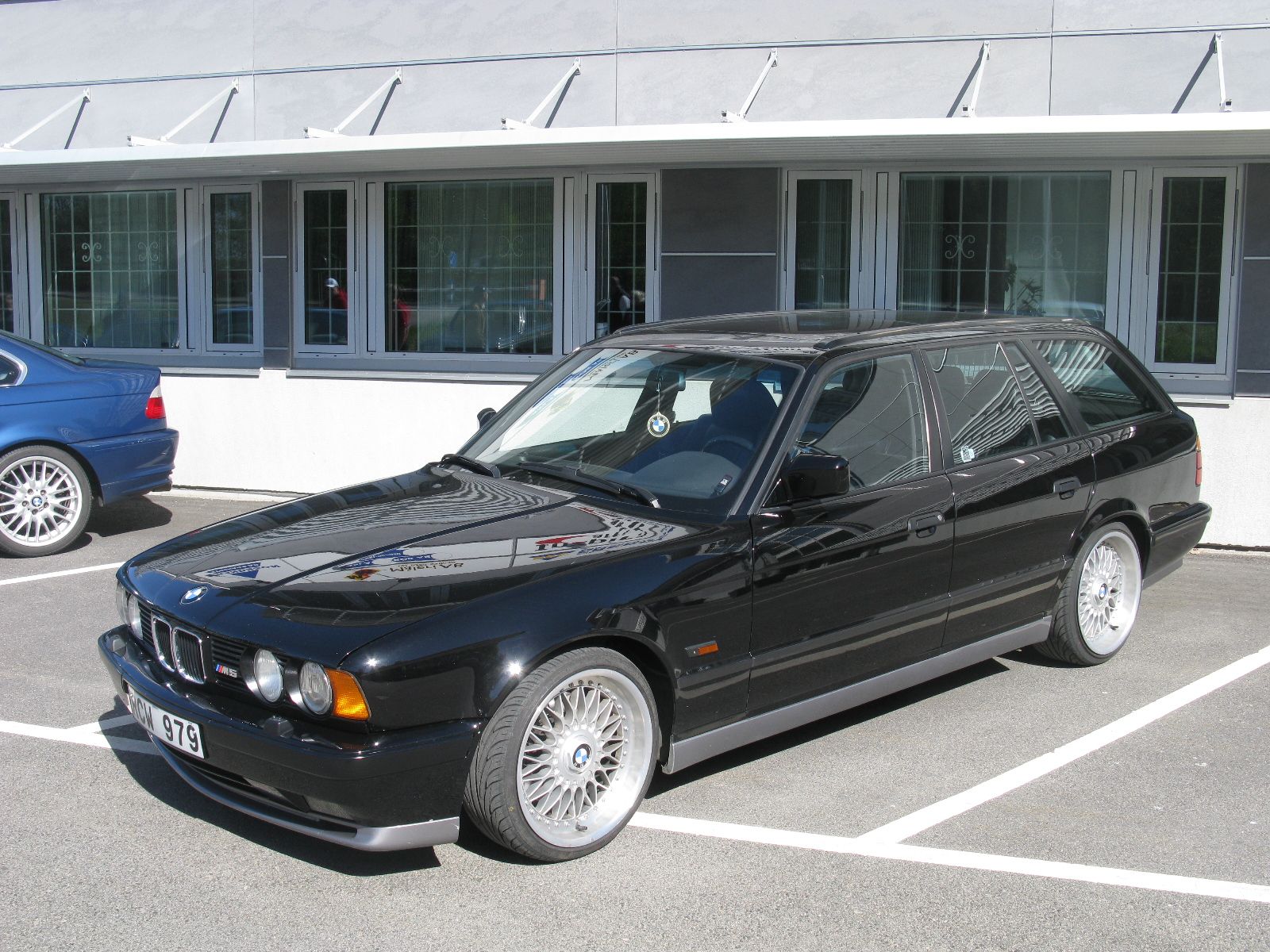
4. **BMW E34 M5 Touring**
The BMW E34 M5 Touring is an undeniable testament to German engineering excellence, representing a pinnacle of performance and practicality. As the very first M5 wagon ever produced, it masterfully combined the thrilling performance characteristics of a sports car with the versatile practicality expected of a family vehicle. Its aggressive stance, instantly recognizable by BMW’s signature kidney grille, clearly communicated its formidable capabilities to any discerning enthusiast.
Under the hood, this exceptional machine boasted a powerful engine specifically tuned by BMW’s M division, delivering thrilling speed and incredibly precise handling. This allowed drivers to experience exhilarating dynamics typically reserved for two-door coupes, but within the utilitarian body of a wagon. The driving experience was characterized by a responsiveness and agility that belied its size, making every journey an engaging event for the driver.
Inside, the E34 M5 Touring exemplified a harmonious blend of luxury and utility, featuring an interior meticulously designed for comfort during long journeys while still providing ample space for cargo and passengers. This rare gem remains a highly sought-after model for those who crave blistering speed without making any compromises on space or everyday usability. It stands as a truly underappreciated icon, showcasing BMW’s ability to create a performance machine that redefines the wagon segment.
Car Model Information: 2025 Hyundai PALISADE XRT
Name: BMW M5
Caption: F90 M5 (left) and E28 M5 (right)
Manufacturer: BMW M
Production: 1984–present
Class: Executive car
Layout: Front-engine, rear-wheel-drive,(1984–1995, 1998–2016)
Related: BMW 5 Series,BMW M6
Categories: 1990s cars, 2000s cars, 2010s cars, 2020s cars, All Wikipedia articles written in British English
Summary: The BMW M5 is a high-performance version of the BMW 5 Series automobile developed by BMW’s motorsport division, BMW M GmbH, built from 1992 to 1995, 2006 to 2010, and since 2024. The M5 has continuously been produced in the saloon body style, in some countries also as a estate.
The first M5 model was hand-built beginning in late 1984 on the E28 535i chassis with a modified engine from the M1 that made it the fastest production saloon at the time. M5 models have been produced for every generation of the 5 Series since 1984, with occasional gaps in production (1995 to 1998, 2023 to 2024).
Get more information about: BMW M5
Buying a high-performing used car >>>
Brand: BMW Model: E34 M5 Touring
Price: $40,788 Mileage: 5,081 mi.
Read more about: Igniting Automotive Fortunes: 15 Rare Vehicles That Appreciated Dramatically Since Release and Are Smart Investments for Collectors
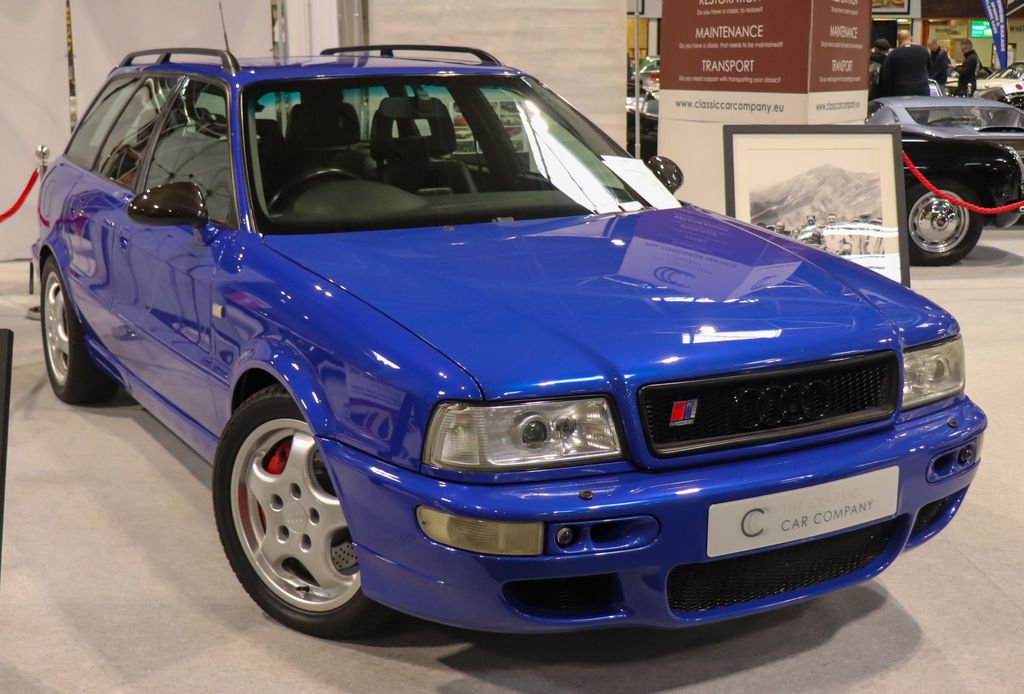
5. **Audi RS2 Avant**
The Audi RS2 Avant emerged from a remarkable collaboration between Audi and Porsche, instantly establishing itself as a wagon that profoundly defied expectations. This groundbreaking vehicle was a marvel of its time, featuring a vibrant exterior and a design significantly influenced by Porsche’s performance ethos. Notably, the RS2 Avant holds the distinction of being the very first Audi to proudly wear the coveted RS badge, signaling its status as a high-performance machine destined for legendary status.
Equipped with a highly potent turbocharged engine, the RS2 Avant delivered exhilarating speed and acceleration that could rival many dedicated sports cars of its era. This raw power, combined with Audi’s renowned Quattro all-wheel-drive system, ensured exceptional grip and dynamic handling, making for an incredibly engaging driving experience. Its performance metrics were astounding, allowing it to accelerate from 0-60 mph in a breathtakingly short time, a feat unimaginable for a wagon at that time.
What truly solidified the RS2 Avant’s place in automotive history was its unique and compelling blend of sports car performance with the undeniable practicality of a wagon. Its spacious interior offered genuine utility, capable of hauling significant cargo, while its performance characteristics catered directly to driving enthusiasts. This dual nature made it an iconic and pioneering vehicle, ensuring its legacy as an underappreciated but hugely influential performance wagon.
Car Model Information: 2025 Hyundai PALISADE XRT
Name: Audi RS 2 Avant (8C)
Manufacturer: Audi
Production: March 1994 – July 1995
Assembly: Zuffenhausen
Successor: Audi RS 4
Class: Entry-level luxury car
BodyStyle: estate car
Layout: longitudinal engine,Front-engine, four-wheel-drive layout
Platform: Volkswagen Group B platform#B4
Engine: List of discontinued Volkswagen Group petrol engines#2.2 R5 20v T 232kW (RS2)
Transmission: manual transmission
Wheelbase: 2611 mm
Abbr: on
Length: 4580 mm
Width: 1694 mm
Related: Audi_80#B4_(1991%E2%80%931996)
Powerout: 315 PS
Sp: uk
Categories: All-wheel-drive vehicles, All Wikipedia articles written in British English, All articles needing additional references, All articles with unsourced statements, All pages needing factual verification
Summary: The Audi RS 2 Avant is a high-performance version of the Audi 80 Avant estate car, manufactured from March 1994 to July 1995. Collaboratively designed as a joint venture between Audi AG and Porsche and based on Audi’s B4/8C platform, it received the internal designation of P1. It featured the most powerful version of Audi’s inline-five cylinder turbocharged engine. It represents Audi’s first “RS” model, and the first of their high-performance Avants.
The RS 2 Avant is a limited-edition model that was not widely exported outside of Europe, except in limited quanties to Hong Kong, South Africa, Brazil, and New Zealand. However, the RS 2 has amassed a cult following worldwide including Canada and the United States where the RS 2 was not officially imported due to certification costs and weak brand performance in the early 1990s. RS 2s have now been imported to Canada and USA as both allow non-conforming vehicles to be imported once they reach the age of 15 and 25 years respectively.
Get more information about: Audi RS 2 Avant
Buying a high-performing used car >>>
Brand: Audi Model: RS2 Avant
Price: $40,788 Mileage: 5,081 mi.
Read more about: Beyond the Battery: The Top 10 Non-Hybrid Sedans of 2025 Offering Unbeatable Fuel Economy

6. **Saab 95 Wagon**.
The Saab 95 Wagon, with its distinct two-door design, serves as a classic and compelling example of Swedish innovation in a compact and practical package. Launched in the 1960s, this wagon was expertly engineered to offer remarkable practicality within its relatively small footprint, making it an ideal choice for navigating the often-rugged Scandinavian terrain. Its design prioritized functionality without sacrificing a unique aesthetic that has captivated enthusiasts for decades.
The undeniable charm of the Saab 95 lay in its profound simplicity and its intelligent functionality, appealing directly to those who valued clever engineering over ostentatious displays. Its compact exterior belied a surprisingly spacious interior, which was thoughtfully designed to maximize usability for both passengers and cargo. This efficient use of space made it a highly reliable and versatile companion for everyday tasks and adventurous journeys alike.
Today, the Saab 95 is celebrated not only for its quirky and distinctive style but also for its enduring legacy in automotive history. It represents a period when Saab was pushing boundaries with unique solutions and a clear design philosophy. The robustness of its build and its distinctive character ensure it remains a cherished and somewhat hidden treasure among classic wagon aficionados, exemplifying practical innovation from a brand known for its individuality.
Car Model Information: 2025 Hyundai PALISADE XRT
Name: Saab 95
Manufacturer: Saab Automobile
Production: 1959–1978
Class: Compact car
Predecessor: Saab 93
Layout: FF layout
Related: Saab 93,Saab 96
BodyStyle: station wagon
Wheelbase: 2500 mm
Abbr: on (1969–1978)
Length: 4300 mm
Engine: Two-stroke engine,I3 engine
Transmission: 4-speed manual
Designer: Sixten Sason
Assembly: Trollhättan
Categories: 1960s cars, 1970s cars, Articles with short description, CS1 Swedish-language sources (sv), Cars discontinued in 1978
Summary: The Saab 95 is a seven-seater, two-door station wagon produced by Swedish automaker Saab from 1959 to 1978.
Initially it was based on the Saab 93 sedan, but the model’s development throughout the years followed closely that of the Saab 96, the successor of the Saab 93 from 1960. It was introduced in 1959, but because only 40 were made in 1959, production is often said to have started in 1960.
The first engine was an 841 cc three-cylinder two-stroke, but from 1967 onward, it became available with the same four-stroke Ford Taunus V4 engine as available for the Saab 96 and used in the Saab Sonett V4 and Sonett III. It had a four-speed manual transmission. There was a small handle on the firewall that, when pushed, put the car into a “freewheeling” mode. This allowed the driver to coast downhill without seizing the two-stroke engine, but when power was needed the transmission would engage and the driver could power the car up hill again. As the 95 received the four-speed gearbox before the 96 (that still had the old three-speed unit) it was also used for rallying.
In the US, the Saab 95 received the larger 1.7 litre V4 for the 1971 model year, as a response to tighter emissions regulations. The compression ratio was lowered to 8.0:1, meaning that the power remained at 73 hp (54 kW). The Saab 95/96 remained on sale in the United States until 1973.
A rear-facing folding seat was dropped with the 1976 model year, making the car a regular five-seater. Production ended in 1978 (when only 470 examples were built). A total of 110,527 were made.
For certain markets (Norway, Denmark) a special export version sedan delivery van was available without a rear seat and rear side windows.
Get more information about: Saab 95
Buying a high-performing used car >>>
Brand: Saab Model: 95 Wagon
Price: $40,788 Mileage: 5,081 mi.
Read more about: Old But Gold: 14 Classic Cars That Are Practically Unbreakable – True Legends of Durability
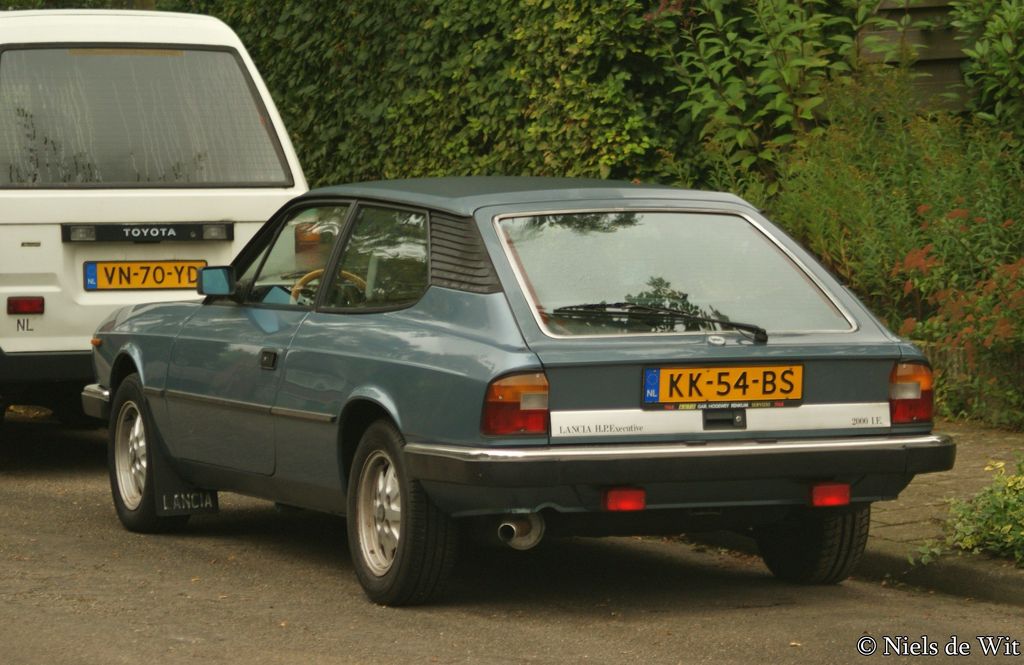
7. **Lancia Beta HPE**
The Lancia Beta HPE masterfully embodies a sophisticated blend of Italian flair and inherent practicality, showcasing a design ethos that prioritizes both aesthetics and usability. Its sporty design, characterized by a gracefully sloping roofline and a dynamically sculpted front fascia, captures attention effortlessly. This unique aesthetic ensures that the Beta HPE stands out from its contemporaries, embodying a distinctive Italian elegance that remains appealing today.
Launched in the 1970s, the Beta HPE offered spirited performance, making it a compelling choice for driving enthusiasts seeking a more engaging experience from their practical vehicle. Its engineering was geared towards delivering an agile and responsive ride, providing a sense of connection to the road that was characteristic of Lancia’s sporting heritage. This emphasis on driver enjoyment was a significant factor in its appeal to a niche but dedicated audience.
The interior of the Beta HPE skillfully combined luxury with impressive functionality, providing ample space for occupants and cargo without compromising on its inherent style. Despite not being as commonly encountered as other wagons of its era, its unique character and surprising performance ensure its status as a cherished collector’s item today. The Lancia Beta HPE remains a compelling example of a truly underappreciated gem, offering a rare fusion of performance, Italian design, and versatile practicality.
Having journeyed through some of the initial hidden gems of the wagon world, our exploration now shifts to uncover even more exceptional models that have, for various reasons, remained below the mainstream radar. This section delves deeper into the distinctive features, performance prowess, and the hidden value these wagons offer, solidifying their status as true utility icons and underscoring their profound impact on automotive history. Each vehicle we highlight embodies a unique chapter in the story of the station wagon, proving that practicality and distinctive character can indeed coexist.
Car Model Information: 2025 Hyundai PALISADE XRT
Name: Lancia Beta
Caption: 1977 Lancia Beta Berlina
Alt: Beige four door hatch with twin headlights on a raised blue carpeted exhibition stand
Production: 1972–1984
Manufacturer: Lancia
Assembly: Turin
Designer: Pininfarina
Class: Compact executive car
BodyStyle: fastback,notchback,coupé,Targa top,shooting brake,Mid-engine design
Layout: Front-engine, front-wheel-drive layout,Rear mid-engine, rear-wheel-drive layout
Related: Lancia Trevi,Lancia Montecarlo
Engine: Straight-four engine,1.4 L I4 (petrol),1.6 L I4 (petrol),1.8 L I4 (petrol),2.0 L I4 (petrol),Supercharger
Wheelbase: 2535 mm
Abbr: on
Length: Berlina: {{convert,4293,–,4320,mm,in,1,abbr=on
Width: Berlina: {{convert,1651,mm,in,1,abbr=on
Height: Berlina: {{convert,1397,mm,in,1,abbr=on
Weight: convert
Predecessor: Lancia Fulvia
Successor: Lancia Prisma
Sp: uk
Categories: 1980s cars, All articles needing additional references, All articles with dead external links, Articles needing additional references from August 2010, Articles with dead external links from July 2025
Summary: The Lancia Beta (Type 828), stylised Lancia β, was an entry-level luxury car produced by Italian car manufacturer Lancia from 1972 to 1984. It was the first new model introduced by Lancia after it had been taken over by Fiat in 1969.
The Beta was made in several body styles, namely 4-door fastback saloon (Beta berlina), 4-door three-box, notchback saloon (Beta Trevi), 2-door coupé (Beta Coupé), 2-door targa (Beta Spider), 3-door estate (Beta HPE); a mid-engined sports car was also sold under the Beta name, the Lancia Beta Montecarlo.
Get more information about: Lancia Beta
Buying a high-performing used car >>>
Brand: Lancia Model: Beta HPE
Price: $40,788 Mileage: 5,081 mi.
Read more about: 12 Ridiculously Rare Wagons That Outshine Muscle Cars: An Enthusiast’s Deep Dive
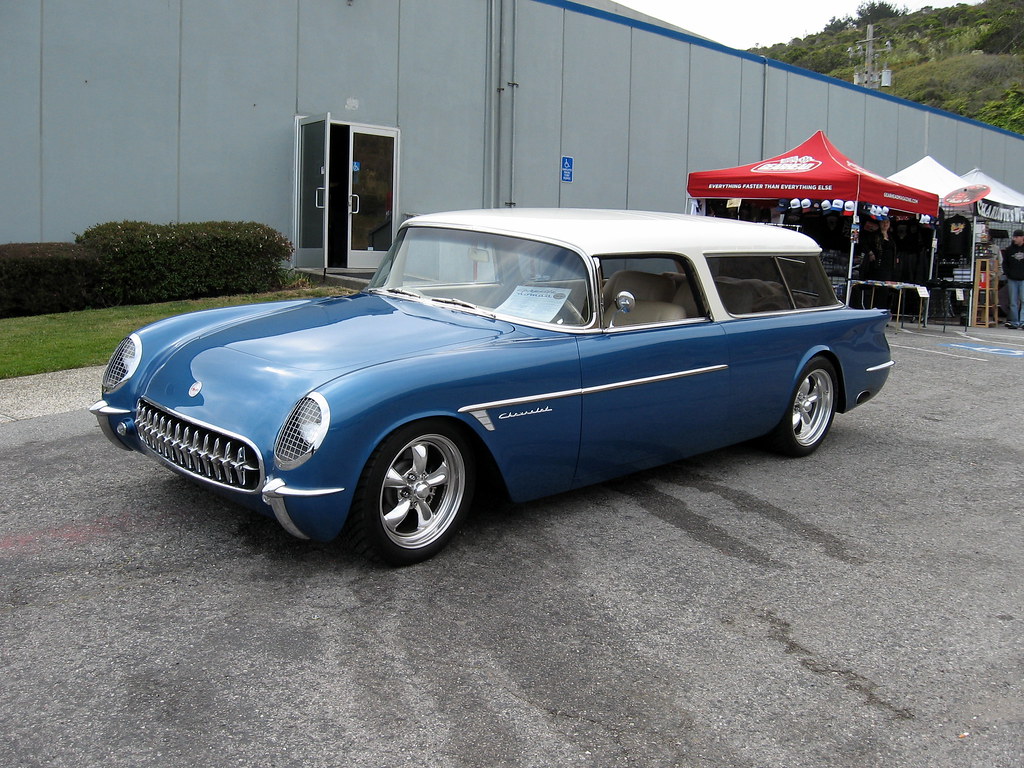
8. **Chevrolet Nomad (1955-1957)**
The Chevrolet Nomad stands out as a true icon in automotive design, a testament to mid-1950s innovation. Produced for a remarkably short span of only three years, this stylish wagon broke the mold by drawing inspiration directly from the legendary Corvette’s design language. This daring approach endowed it with a distinctly sporty and upscale appearance, setting it apart from its more conventional counterparts and instantly cementing its place as a desirable collectible.
Its distinctive two-door configuration and gracefully sloping roofline were revolutionary, creating an aesthetic that was both elegant and dynamic. This bold styling choice not only made the Nomad a visual standout but also underscored Chevrolet’s commitment to pushing design boundaries. It represented a unique and compelling blend of style and inherent utility, proving that a family vehicle could possess undeniable charisma and performance-oriented aesthetics.
The Nomad’s rarity today, combined with its striking design and foundational link to a celebrated sports car, has firmly established its place in automotive history. It wasn’t merely a station wagon; it was a statement piece, embodying a forward-thinking design philosophy that continues to captivate collectors and enthusiasts alike, remaining a symbol of innovative American automotive craftsmanship.
Car Model Information: 1957 Chevrolet Nomad
Caption: 1955 Chevrolet Bel Air Nomad
Name: Chevrolet Nomad
Manufacturer: Chevrolet
Production: 1955–1961,1968–1972
Layout: FR layout
Categories: 1950s cars, 1960s cars, Articles with short description, Chevrolet concept vehicles, Chevrolet vehicles
Summary: Chevrolet Nomad is a nameplate used by Chevrolet in North America from the 1950s to the 1970s, applied largely to station wagons. Three different Nomads were produced as a distinct model line, with Chevrolet subsequently using the name as a trim package.
Marketed as a halo model of the Chevrolet station wagon line for the Tri-Five series, the Nomad was repackaged as a station wagon counterpart of the Chevrolet Bel Air and Chevrolet Impala from 1958 to 1961. From 1968 to 1972, the Nomad returned as the base-trim Chevrolet Chevelle station wagon.
Making its debut on a 1954 concept car, the nameplate has again seen used by Chevrolet on multiple concept vehicles; none have reached production.
Get more information about: Chevrolet Nomad
Buying a high-performing used car >>>
Brand: Chevrolet Model: Nomad
Price: $72,999 Mileage: 30 mi.

9. **Mercedes-Benz W124 E-Class Wagon**
The Mercedes-Benz W124 E-Class Wagon is renowned globally for its unparalleled durability and timeless elegance, truly setting a benchmark in its segment. Introduced in the late 1980s, this vehicle exemplified robust engineering and a suite of luxurious features that immediately distinguished it from the competition. The iconic three-pointed star proudly adorning its grille serves as a clear testament to its rich heritage and the brand’s unwavering commitment to quality.
Beyond its striking exterior, the W124 Wagon offered an interior designed with the utmost attention to comfort and style, perfectly catering to discerning families. Its spacious cabin and meticulously crafted amenities made it a preferred choice for long-distance travel, promising a serene and composed journey. This remarkable balance of luxury and genuine utility ensured that every trip, whether a cross-country adventure or a daily commute, was executed with sophisticated ease.
The vehicle’s legendary reliability, coupled with its consistent performance, secured its status as a favorite among those who demanded both steadfast dependability and a refined driving experience. Even today, the W124 E-Class Wagon stands as a powerful symbol of understated luxury and exceptional resilience. It is highly admired by a dedicated community of collectors and enthusiasts, who recognize its enduring value and its significant contribution to automotive excellence.
Car Model Information: 2025 Hyundai PALISADE XRT
1: Mercedes-Benz OM603 engine
2: Mercedes-Benz OM606 engine
3: Mercedes-Benz M119 engine
4: Mercedes-Benz M104 engine
5: Mercedes-Benz M104 engine
6: Mercedes-Benz M104 engine
7: Mercedes-Benz M104 engine
Name: Mercedes-Benz W124
Manufacturer: Daimler-Benz
Production: ubl
Predecessor: Mercedes-Benz W123
Successor: ubl
Class: Executive car
Layout: Front-engine, rear-wheel-drive layout,rear-wheel drive
BodyStyle: ubl
Related: Mercedes-Benz E-Class,Ssangyong Chairman
Assembly: ubl
Wheelbase: ubl
Abbr: on
Length: ubl
Width: ubl
Weight: ubl
Height: ubl
Engine: Petrol engine
Framestyle: border:none; padding:0;
Title: Straight-six engine
Transmission: ubl
Designer: ubl
Categories: 1990s cars, All-wheel-drive vehicles, All articles needing additional references, All articles with unsourced statements, Articles needing additional references from September 2025
Summary: The Mercedes-Benz W124 is a range of executive cars made by Daimler-Benz from 1984 to 1997. The range included numerous body configurations, and though collectively referred to as the W-124, official internal chassis designations varied by body style: saloon (W 124); estate (S 124); coupé (C 124); cabriolet (A 124); limousine (V 124); rolling chassis (F 124); and long-wheelbase rolling chassis (VF 124).
From 1993, the 124 series was officially marketed as the E-Class. The W 124 followed the 123 series from 1984 and was succeeded by the W 210 E-Class (saloons, estates, rolling chassis) after 1995, and the C 208 CLK-Class (coupés, and cabriolets) in 1997.
In North America, the W124 was launched in early November 1985 as a 1986 model and marketed through the 1995 model year. Series production began at the beginning of November 1984, with press presentation on Monday, 26 November 1984 in Seville, Spain, and customer deliveries and European market launch starting in January 1985.
Get more information about: Mercedes-Benz W124
Buying a high-performing used car >>>
Brand: Mercedes-Benz Model: W124 E-Class Wagon
Price: $40,788 Mileage: 5,081 mi.
Read more about: Beyond the Hype: 10 Undervalued 90s-Era Cars Still Smart Buys for Daily Commuters Next Year
10. **Peugeot 504 Familiale**
The Peugeot 504 Familiale emerges as a truly spacious and remarkably rugged station wagon, distinguished by its inherent durability, exceptionally smooth ride, and timeless classic European styling. Produced extensively between the 1970s and 1980s, this vehicle was meticulously engineered to serve as a versatile, family-friendly workhorse, demonstrating an impressive commitment to practicality that included flexible three-row seating.
Its reputation for bulletproof reliability and an extraordinarily comfortable suspension system made the 504 Familiale an indispensable choice across diverse global terrains. It was widely adopted and highly utilized in the challenging conditions of Africa, the varied landscapes of Europe, and the demanding roads of South America, where it consistently proved itself as an utterly dependable long-distance cruiser. This global acceptance speaks volumes about its robust construction and thoughtful design.
Today, this remarkable wagon retains its status as a rare and highly sought-after classic. Enthusiasts and collectors alike deeply appreciate its unique and compelling blend of distinctive style, superior comfort, and an unwavering toughness that few vehicles of its era could match. The Peugeot 504 Familiale therefore represents an underappreciated gem, embodying a profound legacy of practical innovation and enduring automotive quality.
Read more about: The Resurgent Icons: 11 ’80s Wagons That Vanished from Assembly Lines, But Still Haunt Our Automotive Dreams
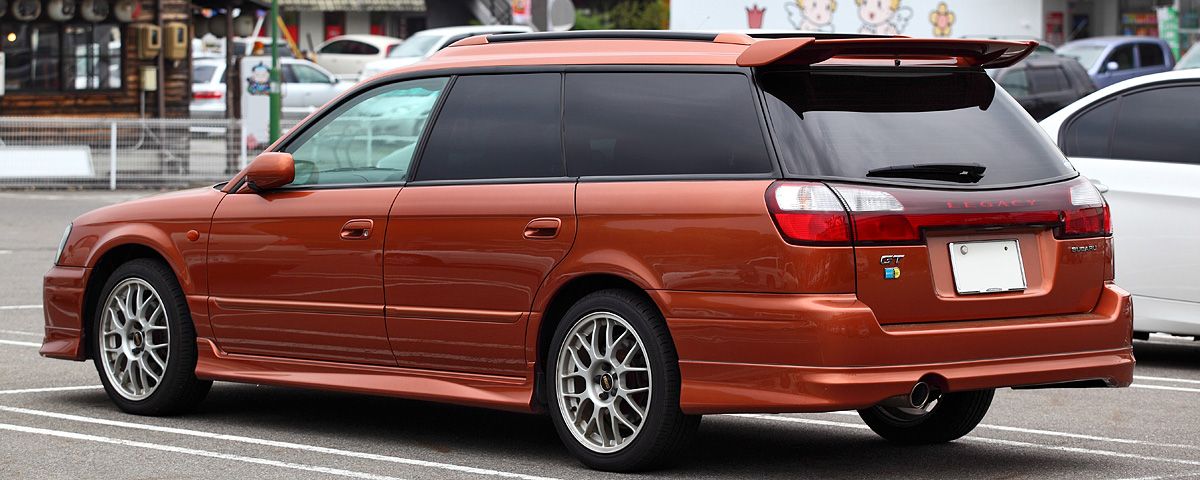
11. **Subaru Legacy Touring Wagon**
The Subaru Legacy Touring Wagon has become truly synonymous with adventure, a testament to its design for those who embrace the outdoors. Celebrated for its legendary all-wheel-drive capability, this wagon provides unparalleled control and confidence across a myriad of diverse driving conditions, whether navigating challenging dirt roads or handling inclement weather. Its sleek, aerodynamic design, thoughtfully complemented by integrated practical roof rails, powerfully appeals to the heart of every outdoor enthusiast.
Inside, the Legacy Touring Wagon offers a meticulously crafted environment that harmoniously blends comfort with expansive space, positioning it as an ideal companion for family adventures. Every detail is considered to ensure a pleasant journey, allowing occupants to relax and enjoy the ride while ample cargo room caters to all equipment needs. This interior thoughtfulness underlines Subaru’s dedication to creating vehicles that support an active lifestyle without compromise.
The wagon’s well-established reliability and robust performance have solidified its position as a consistently popular choice among individuals who yearn for exploration, yet refuse to compromise on the essential elements of comfort and safety. The Subaru Legacy Touring Wagon profoundly embodies Subaru’s core commitment to groundbreaking innovation and the spirit of adventure, continually inspiring drivers to venture further and experience more.
Read more about: The Road to Ruin: 15 Major Engine Models That Crumbled Before 50,000 Miles

12. **Mazda 6 MPS Sports Wagon**
The Mazda 6 MPS Sports Wagon stands as a testament to a truly rare and compelling blend of high-performance driving dynamics and inherent everyday practicality. With its distinctively sporty design and a potent turbocharged engine nestled under the hood, this wagon delivers an exhilarating driving experience that challenges expectations for its segment. The vehicle’s sharp, aggressive lines and a bold front grille project an unmistakable sense of confidence and sophisticated style, commanding attention wherever it goes.
Inside, the Mazda 6 MPS masterfully achieves a perfect balance between luxury appointments and uncompromising functionality, offering an environment that is both comfortable and remarkably spacious. This thoughtful interior design ensures that passengers can enjoy refined surroundings while still benefiting from ample cargo capacity, making it versatile for any occasion. Every element is carefully integrated to enhance both the aesthetic appeal and the usability.
Its considerable rarity, combined with its impressive performance capabilities, elevates the Mazda 6 MPS Sports Wagon to a highly sought-after model among automotive enthusiasts who passionately desire both blistering speed and versatile utility. This exceptional wagon unequivocally serves as a powerful testament to Mazda’s unwavering engineering excellence and its innovative spirit, demonstrating a profound ability to fuse disparate automotive characteristics into a cohesive and thrilling package.
Car Model Information: 2025 Hyundai PALISADE XRT
Name: Mazda Capella
Caption: Sixth-generation Mazda 626 sedan
Manufacturer: Mazda
Class: Compact car
Layout: front-engine, rear-wheel-drive layout,front-engine, front-wheel-drive layout,front-engine, four-wheel-drive layout
Production: 1970–2002
Successor: Mazda6
Categories: 1980s cars, 1990s cars, 2000s cars, All-wheel-drive vehicles, All Wikipedia articles written in British English
Summary: The Mazda Capella, also known as the 626 in Europe, North America and Southeast Asia, is a mid-size car that was manufactured by Mazda from 1970 until 2002. Sold in the Japanese domestic market under the Capella name, the vehicle was also commonly known in other major markets as the Mazda 626. Ford, Mazda’s partner at the time, also used the Capella platform to create the Ford Telstar and Ford Probe. 4,345,279 of the 626 and Telstar models were sold worldwide.
Designed to compete against Japanese mid-size stalwarts such as the Honda Accord, Toyota Corona, and Nissan Bluebird, the Capella was succeeded by the Mazda6 (Atenza) in 2002.
The car was named after Capella, the brightest star in the constellation Auriga, the sixth-brightest in the night sky and the third-brightest in the northern celestial hemisphere, after Arcturus and Vega.
Get more information about: Mazda Capella
Buying a high-performing used car >>>
Brand: Mazda Model: 6 MPS Sports Wagon
Price: $40,788 Mileage: 5,081 mi.
Read more about: The Road to Ruin: 15 Major Engine Models That Crumbled Before 50,000 Miles
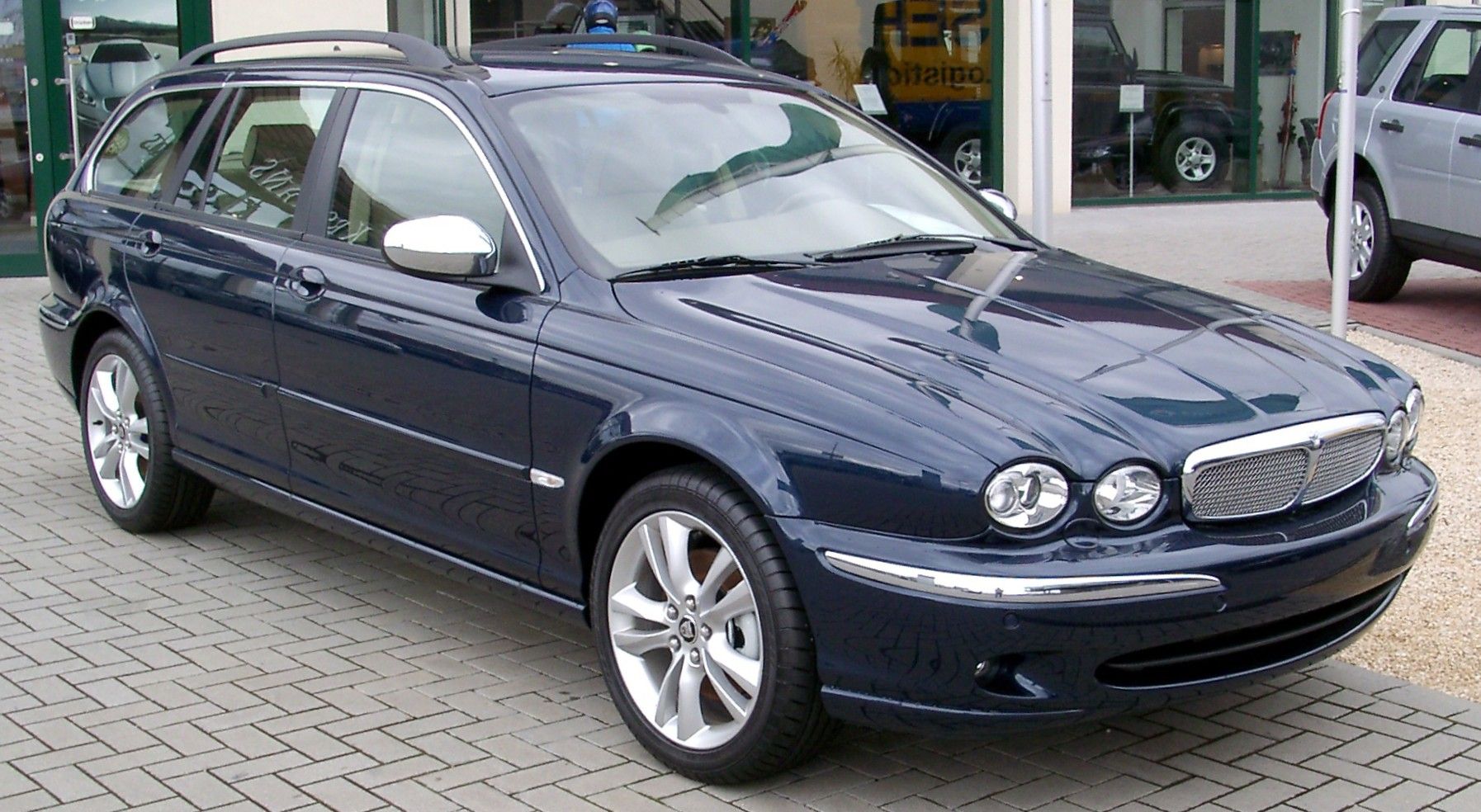
13. **Jaguar X-Type Estate**
The Jaguar X-Type Estate masterfully combines British elegance with an unexpected, yet thoroughly realized, level of practicality, setting it apart in the premium wagon segment. Its refined and sophisticated design, instantly recognizable by the iconic leaping cat emblem, serves as a powerful symbol of inherent luxury and distinguished heritage. Launched in the early 2000s, this vehicle offered a unique and compelling blend of classic Jaguar style alongside genuine utility, aiming to attract a broader audience.
The interior of the X-Type Estate was meticulously crafted with an array of premium materials, ensuring a driving and passenger experience steeped in comfort and undeniable luxury. Despite its inherently practical wagon form factor, it steadfastly maintained Jaguar’s revered reputation for sophistication, delivering a polished and engaging ride characteristic of the brand. This dedication to luxury extended to every surface and control, creating a truly premium ambiance.
Today, the X-Type Estate remains a cherished favorite among those who deeply appreciate luxury vehicles that gracefully incorporate a touch of versatile practicality into their design. It stands as a compelling embodiment of the essence of British automotive craftsmanship, demonstrating Jaguar’s capability to deliver elegance and performance within a highly functional, family-friendly package. This makes it a truly underappreciated gem that offers a distinct alternative to more common luxury sedans.
Car Model Information: 2025 Hyundai PALISADE XRT
Name: Jaguar X-Type
Manufacturer: Jaguar Cars
ModelCode: X400
Production: 2001–2009,355,227 produced
Assembly: Halewood
Class: Compact executive car
BodyStyle: Sedan (automobile),Station wagon
Layout: Front-engine, front-wheel-drive layout,Front-engine, four-wheel-drive layout
Platform: Ford CD132 platform
Designer: Geoff Lawson (designer),Ian Callum
Related: Ford Mondeo (second generation)
Engine: Petrol engine,Jaguar AJ-V6 engine#AJ20,Jaguar AJ-V6 engine#AJ25,Jaguar AJ-V6 engine#AJ30,Diesel engine,Ford Duratorq engine#2.0,Ford Duratorq engine#2.2
Transmission: Manual transmission,Manual transmission,Jatco JF506E transmission,AWTF-80 SC
Wheelbase: cvt
Length: ubl
Width: cvt
Height: ubl
Successor: Jaguar XE
ModelYears: 2002–2009
Categories: ANCAP large family cars, All-wheel-drive vehicles, All Wikipedia articles written in British English, All articles with dead external links, Articles with dead external links from February 2019
Summary: The Jaguar X-Type is a compact executive car which was manufactured and marketed by Jaguar Cars from 2001 to 2009 for a single generation. It has two body styles: A four-door saloon car and a five-door estate car, becoming the first estate car produced by Jaguar. The X-Type has a front-mounted engine and either front-wheel drive or all-wheel drive, and was Jaguar’s first car with front-wheel drive. It was also the first Jaguar with a diesel engine or a four-cylinder engine. The X-Type is considered a large family car by EuroNCAP and a compact car by the United States Environmental Protection Agency.
The X-Type was developed during the period when Jaguar was owned by Ford as a division of its Premier Automotive Group (PAG) (1999–2010) — and marked Jaguar’s entry into the critical compact executive segment. The programme aimed to double the marque’s worldwide sales — requiring expansion of engineering resources, factory capacity, marketing capability, sales support and service. At launch, Autocar called the X-Type “the most important Jaguar ever”.
With annual projections of 100,000 sales, the X-Type recorded a production of 350,000 over its eight-year manufacturing run.
Get more information about: Jaguar X-Type
Buying a high-performing used car >>>
Brand: Jaguar Model: X-Type Estate
Price: $40,788 Mileage: 5,081 mi.
Read more about: Need a Ride? 15 Used Car Models You’ll Want to Steer Clear Of This Year for Hassle-Free Driving
These classic station wagons, often relegated to the sidelines of automotive discussions, are far more than mere conveyances; they are rolling time capsules brimming with stories of family vacations, childhood adventures, and the everyday rhythm of life. They serve as poignant reminders of an era when cars were meticulously built to endure, to be inherently practical, and to stand as dependable companions on life’s intricate journey. As we reflect on these forgotten treasures, we are not just admiring historical vehicles; we are celebrating their enduring spirit, their innovative designs, and the significant, often understated, role they played in shaping our automotive landscape and enriching our cultural identity. Their legacy of versatility, quiet performance, and practical elegance continues to resonate, ensuring their rightful place in the hearts of automotive enthusiasts forever.



